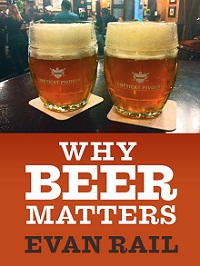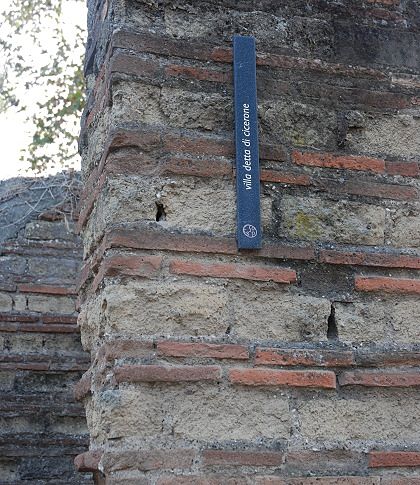Remember those hilarious videos from Breckenridge Brewing a while back? My favorite was “Gravity Activated Pouring.”
They’ve released two more. Probably as good as at least half of those that will be on display Sunday during the Super Bowl.
Remember those hilarious videos from Breckenridge Brewing a while back? My favorite was “Gravity Activated Pouring.”
They’ve released two more. Probably as good as at least half of those that will be on display Sunday during the Super Bowl.
 In the early 1980s, Anheuser-Busch chairman of the board August Busch III ordered that freshly brewed cans of Budweiser and Bud Light would be cryogenically frozen, so that they could be tasted against each other over time.
In the early 1980s, Anheuser-Busch chairman of the board August Busch III ordered that freshly brewed cans of Budweiser and Bud Light would be cryogenically frozen, so that they could be tasted against each other over time.
More than 20 years later, Wall Street Journal reporter Sarah Ellison described a scene where Busch and Doug Muhleman, then A-B’s vice president for brewing and technology, had cans from 1982, 1988, 1993, 1998 and 2003 thawed and set before them in the corporate tasting room. She wrote, “Muhleman . . . says the company didn’t set out to make the beers less bitter. He calls the change ‘creep,’ the result of endlessly modifying the beer to allow for change in ingredients, weather and consumer taste. ‘Through continues feedback, listening to consumers, this is a change over 20, 30, 40 years,’ says Mr. Muhleman, gesturing toward the row of Budweiser cans. ‘Over time there is a drift.’
“The sample cans demonstrate how ‘creep’ works. The difference in taste between two beers brewed five years apart is indistinguishable. Yet, the difference between the 1982 beer and the 2003 beer is distinct. ‘The bones are the same. The same structure,’ says Mr. Muhleman. Overall, however, ‘the beers have gotten a little less bitter.'”
In Why Beer Matters Evan Rail suggests we consider “beer’s unstuck relationship to time.”
Which is why I find myself thinking about beer’s bones. Why when I drink a crappy bottle of Pilsner Urquell it pains me to think about how good it can still taste in the caves underneath the brewery. Why if I didn’t have a cold that disconnected by olfactory system from my brain yesterday — when temperatures here in St. Louis were flat out balmy — I would have been sitting in front of Urban Chestnut Brewing drinking Zwickel, a beer most definitely unstuck in place as well as time.
Beer Matters is first of about Rail’s own relationship with beer.
I can’t explain what beer means for everyone: as a subject, beer is too broad and deep, too varied and multiform, just like the wide public for whom it has clearly come to mean so much. But I can tell you a few things about beer that I like most myself, why beer has come to matter to me, and what I tell people when they ask why I have chosen to write about it.
An allusion to Billy Pilgrim aside, this relationship is an act of free will. He writes, “If the unexamined life has less merit than one which has borne deep investigation, clearly there is some value in caring about what you eat and drink.”
He gives 937 words to his personal obsession with the Polish smoked-wheat beer known as Grodziskie, and part of the story is about how quickly a single beer can disappear.
Despite its recent fall from grace Budweiser hardly seems in such danger. And I don’t really care what a can from 1982 might taste like. But I do appreciate that August Busch III understood why it matters, why beer matters.
*****
Now the full disclosure. Evan Rail and I have been drinking together. He bought rounds. I bought rounds. He emailed me a copy of Why Beer Matters for review. In fact, I bought it from Amazon, in part because we are sort of friends and in part because of curiosity about how the whole “download it to Kindle” would work even though our family does not yet don’t own a Kindle. (We go to the library a lot, plus I read it on my phone.)
The essay runs about 6,500 words, a chapter in some books. You’d like to read it in a beer publication, but find me one that will print something of such length. I have no idea what Beer Matters might lead to from Evan — notice he was “Rail” in the review part, very professional, but this is the personal part — or others. But I hope it’s more.

Ray Daniels predicts that his Cicerone program will 10,000th certification in a matter of weeks. And it seems like only yesterday, as opposed to 79 AD in Pompeii (which is where this photo was taken; in 2008 rather than before Mount Vesuvius erupted). Here are the basics from a little press release:
It may seem like just yesterday that you first heard of the Cicerone Certification Program–the sommelier-like sequence for beer that tests and certifies knowledge among those who sell and serve suds for a living. But the program is now more than four years old and the number of certifications issued at the first level has skyrocketed in the past two years.
We’re writing to tell you that we’ll soon award our 10,000th certification at that first level. That’s a big event for us and for everyone involved with the program. So to celebrate, we’ll offer a unique opportunity for people to sign-up for the program at a great price — but only for a single day.
The best way to track updates is to follow Ray Daniels on Twitter.
* But perhaps we can all agree we like cicerones better than laywers. And, yes, I know passing the first level test doesn’t make a person a “cicerone.” There are Certified Beer Servers, Certified Cicerones and Master Cicerones, but don’t begrudge me Tom Paxton reference.
If you read blogs and don’t write a blog then your answer to the question Alan McLeod asks, “What If I Posted A Series Of Posts For A Fee?” will likely be read with great interest by Alan and others who write blogs.
Go. Comment.
Otherwise, a few links I’ve collected in recent weeks and haven’t managed to passing along.
* Alaskan Brewing has finalized its biofuels project. Soon it will be three years since I wrote about Alaskan getting its mash filter press online. There’s a bottom line here beyond the financial bottom line. This is good for the Alaskan environment.
* Best of the rest, I guess. The explanation Livability came up with for how it picked its “Top 10 Beer Cities” could be more illuminating. “Most beer lovers already know about the big beer cities. The keg has been tapped on places like Portland, Asheville, Fort Collins, NYC, and Chicago. What we’ve been brewing is a list of places beer nuts might miss. These are cities where great beer is being made and more importantly it’s being enjoyed, even celebrated.” No. 1 on this list of Albuquerque. For the record, I’d rather be drinking beer right now in Albuquerque than Asheville, but that’s my personal bias. However, Asheville has a population of 83,393 and Albquerque’s is 448,607, so I am struggling with the concept of “big.”
* Tableside whole-hop infusions. “Here’s how it works: Order any Bull & Bush (a Denver brewpub) beer on tap and then pick one of five hops varietals grown by Jack Rabbit Hill Hops in the Western Slope town of Hotchkiss. The beer will be served in a French press with the crumbled hops cones added. The customer can then choose how long to wait before pouring the beer and tasting the effect.”
This is going to result in a lot of crappy beer experiences. But I predict the idea has legs.
Bring on the vestal virgins.
The White IPAs are upon us. This is not a bad idea, marrying Belgian White beers with New World hops, at least until somebody starts writing new style guidelines. Last year’s collaboration beers from Deschutes Brewery and Boulevard Brewing proved that. Boulevard’s version even won a medal at the Great American Beer Festival (in the American-Belgo-Style Ale category).
The skinny:
* Deschutes Chainbreaker White I.P.A. It will released be in the Northwest in March. Not the same recipe as in the collaboration with Boulevard (no sage, for one thing). 5.6% ABV, 60 IBUs.
* Samuel Adams Whitewater IPA. Available now in the Brewer’s Choice Variety 12-Pack and soon in six-packs. Hops from the American Northwest and Australia. 5.8% ABV.
* Saranac White IPA. “We’ve taken a delicious American IPA bursting with Citra hops, and given it a whole new direction by adding the refreshing fruitiness of orange peel & coriander and the softening characters of wheat malt and oats.” 6% ABV.
And, yes, there’s every chance I posted this only so I could add still more links to different versions of “Whiter Shade of Pale” . . .
– A version with strings (tent included).
– Joe Cocker. I apologize if you get an obnoxious ad.
– Gov’t Mule.
– Percy Sledge. Not at his best, but comes with lyrics you can read.
– Annie Lennox. Honest to goodness, you have different Annie Lennox versions to choose from. I went with artsy.
– Willie Nelson. Yes, there’s every chance I’ve spent too much time fully vetting these videos.